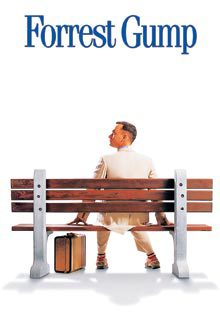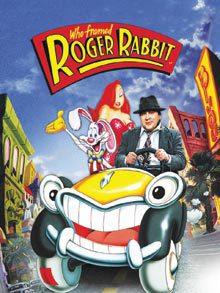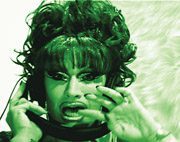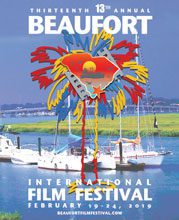 Two-time Oscar winner Arthur Schmidt to receive Jean Ribaut Award for Excellence in Film Editing
Two-time Oscar winner Arthur Schmidt to receive Jean Ribaut Award for Excellence in Film Editing
By Mark Shaffer
“The essence of cinema is editing. It’s the combination of what can be extraordinary images of people during emotional moments, or images in a general sense, put together in a kind of alchemy.”
– Francis Ford Coppola, Director, The Godfather
Coal Miner’s Daughter. Who Framed Roger Rabbit? Back to the Future 1,2 &3. Cast Away. The Last of the Mohicans. The Birdcage. Pirates of the Caribbean: Curse of the Black Pearl. Forrest Gump. All of these films (and a good many more) have something in common.
Their stories and characters all came together in Arthur Schmidt’s editing room. Much of Schmidt’s impressive resume is synonymous with the work of Robert Zemeckis, a Director known for pushing the boundaries of conventional filmmaking. Arthur Schmidt – Artie to his friends – has been instrumental in crafting some of the most memorable cinematic moments and performances of the last few decades.
Film editing was sort of the family business, although Schmidt never intended to take up the trade. His father, Arthur P. Schmidt cut classics like Some Like It Hot, Sabrina, The Spirit of St. Louis and Sunset Boulevard for legendary director, Billy Wilder.
Artie Schmidt has a house full of awards for film editing, including Oscars for Who Framed Roger Rabbit and Forrest Gump. He’ll add a Ribaut to the mantle after being honored for his body of work at the 8th annual Beaufort International Film Festival. This marks his first trip back to the Lowcountry since working on Gump twenty years ago . . .
Mark Shaffer: What sort of memories spring to mind from working on location for that film?
Arthur Schmidt: The night that I arrived they were shooting the hurricane scene with Lt. Dan up at the top of the mast. I got to the set where they were spraying the water and it looked incredibly real and incredibly dangerous (laughs). I felt like I should get out of there because it was a little too real.
I didn’t have a lot of time to travel around Beaufort because I was only there for a couple of weeks and I had to go black to Los Angeles on a family emergency. Most of my time there was spent in the editing room. But just before I had to leave they moved me into a very nice house in a development outside of town with beautiful grounds, lovely trees and ponds and lakes. My most vivid memory was going out for a walk in the morning, which is what I do in anticipation of sitting in an editing room all day. I passed one of those ponds and there was an alligator – it is an alligator, right?
MS: Oh yeah. We’ve still got plenty of them.
AS: (laughs). Good. I can warn my wife. Nobody warned me. I nearly jumped out of my skin. Nobody told me you had creatures like this around the neighborhood.
MS: At any point when you were working on Gump was there ever a sense that something extraordinary was happening?
AS: No. It was such an oddball movie. Forrest is Forrest. He’s totally unique. I don’t think that we had a sense that it would be the huge success that it was. That happens a lot in the editing room because you’re always editing scenes out of sequence and you finish a scene and think, that’s nice. It’s a good scene. But so often you’re not aware of how it fits into the movie. It’s just a step-by-step process until you get the whole film into the cutting room and start putting it together in sequence.
MS: You’ve done a lot of films with [Director] Robert Zemeckis. What makes this partnership work so well?
AS: I think it’s the ease of being able to sit in the editing room and exchange ideas and to be totally honest with the director in terms of your reaction to the material and the performances. Before [Zemeckis] comes in I’m editing the scenes as they’re being shot so when he comes in he can go through it scene by scene in the editing room. And that’s what Bob prefers to do – start at the beginning and see what I’ve come up with. Most of the time he doesn’t see anything until the whole movie is shot unless he thinks or I think there’s some kind of a problem.
MS: In one way or another its been said movies are shot on set but made in the editing room. Christopher Nolan says that you discover the film in the editing room. Can you explain a bit about the process?
AS: When the director is shooting the film he shoots a scene from various angles – wide angle, over the shoulder, medium close-up, extreme close-up – depending upon what he perceives to be the needs of the scene. I think the revelation for him is to see which choices the editor has made in regard to which pieces to use to build the scene. Bob has an extremely good editorial sense and he says [editing] is his favorite part of making a movie.
MS: What’s harder to edit comedy or drama?
AS: It doesn’t make any difference to me. It’s all timing and reacting to the material. Obviously in comedy timing is crucial, but I find that’s true in editing a dramatic movie, too. You want the right reaction at the right time and to be cutting in the right place. So much of it is instinctive and intuitive. I love cutting comedies because I like to laugh (laughs).
MS: Well, you must’ve had a ball cutting The Bird Cage.
AS: Yes, I did. That was great fun and of course it was great working with [Director] Mike Nichols  who’s a master of comedy and a great overall filmmaker.
who’s a master of comedy and a great overall filmmaker.
MS: And a guy with a deep background in writing and performing comedy as well as directing lighthearted little romps like Who’s Afraid of Virginia Wolf? A rare breed.
AS: Yeah. Absolutely. But he was wonderful. He always gave me a completely free hand and let me cut the scene and show it to him. Most of the time there were a minimal amount of changes – not to say we wouldn’t go through all the outtakes and review everything for performances. We were in sync.
MS: A lot of the films you’ve cut are heavy on effects, particularly the Zemeckis films like Contact, the Back To The Future trilogy, Who Framed Roger Rabbit? Does that present an extra challenge in the editing process.
AS: It does present an extra challenge. Before Back To The Future I’d never done a big visual effects movie. You have to imagine the effect that’s going to be there as best you can while you’re editing the scene because it’s absolutely crucial to the visual effects people and the budget of the film that you get the cut as right as it possibly can be.
On the Back To The Future movies we had to get the cut theoretically right for the visual effects people and for the budget. It would have been nice to have a few extra frames to play around with but it wasn’t allowed.
The most difficult thing for me on Roger Rabbit was not to have some extra frames once the animation had been added to the various shots because that animated character wasn’t there yet. At the beginning of Roger Rabbit I begged the producers to give me some extra frames at the beginning of the shot or the end of a shot in case I wanted to extend a shot. But they said absolutely not because it was too expensive. And I think we had a bout 1100 animated shots in that movie, maybe even more. So, cutting the scenes with animated characters was like cutting negative on the movie. You had to get it right. And we did.
MS: I was channel surfing recently and three of your films were running simultaneously. What happens when you catch one?
AS: If I’m switching channels and find a film that I’ve worked on I stop and I get very tense (laughs). I sit there and think, “What could I have done to make this better? How could I have cut the scene to make it different? Is it too long? Was it cut too short?”
I get so tense that I finally have to talk myself into relaxing and saying, “It’s over! It’s out there. It is what it is and there’s nothing more to be done. Stop driving yourself crazy and sit back and relax or change the channel (laughs).”
MS: Your dad, Arthur P. Schmidt, has quite a list of credits including five Billy Wilder films. Can you recall a moment when you knew you wanted to do what he did?
AS: That’s a really difficult question. Ever since I was a kid I was going to movies. I loved movies. But my father quite often said, “Don’t get into this business. It’s just too hard. Go out and do something in business. Go sell insurance.” I’m not quite sure why he said that because he loved what he did. And obviously he was terrific at it. He would sort of contradict himself a bit when he would take me to onto the sets of various movies and we’d walk into the living room of the Sunset Boulevard house with that staircase. I remember being on the set of The Ten Commandments and seeing Mount Sinai (laughs). You get hooked by seeing all this fantasy as reality.
I tried to stay away from editing. I was an English major at the University of Santa Clara and I thought maybe I could become a writer because I loved reading and I loved books. And also it’s what people do when they don’t know what they want to do.
MS: (Laughing) Hey watch it. You’re talking to another English major.
AS: I was just thinking that (laughs).
MS: Well it makes me very proud that you were an English major. And has that factored into what you do, which is essentially telling stories?
AS: It’s got to be there, that sense of how to tell a story. I was not a very imaginative fiction writer, and I did try my hand at it. But the most ironic thing is that I got into the film editing business after my father died. I had been living in Spain and teaching English over there. I got a telegram one day and I hopped on a plane and came back for the funeral. There were film editors and assistant editors there. A couple of the assistant editors I’d known because they were good friends of my father’s. A few weeks later they called me up knowing I was broke and needed work and said, “There’s a job as an apprentice film editor over at Paramount. Would you like it?” And I said, “Sure!” I thought I’d see if I liked it and give it a year and make some money to get back on my feet financially. If I like it I’ll stay, if I don’t I’ll find something else. Obviously, I loved it.
 MS: It clicked.
MS: It clicked.
AS: It did. I felt I was where I should be.
MS: What were some of the films you looked to as a young editor?
AS: Well, certainly the films my father did with Billy Wilder. Gosh, there are so many. I think like a lot of editors at that time we were also influenced very much by what Dede Allen was doing, what she did on Bonnie and Clyde. She took a lot of chances and did a lot of unorthodox things. I would go see any movie Dede had edited. And then Jim Clark, an English editor who did The Pumpkin Eater and The Innocents. I was always fascinated by what Jim did. I was lucky enough to get the job of standby editor on Marathon Man with Jim.
He was wonderful to me. He started giving me scenes to cut because I was his assistant and his standby. He was finishing another film and the beginning of Marathon Man overlapped with that so the film piled up in the cutting room and he eventually started handing me scenes to cut. He liked what I did and even asked me a couple of times to re-cut scenes that he’d cut. He’d say, “Go and see if you can make this better! (Laughs)
MS: And did you?
AS: Well, he said “yes” a couple of times. I did work as an assistant and standby with Dede on Little Big Man.
MS: Another of my all time favorites, and a hugely underrated film.
AS: Yeah. To be in the cutting room with Dede was one of my dreams. I was hoping she’d kind of verbalize some of her ideas about film editing, but that never happened. The thing that I got from both of them was that they took chances and if there was a problem with a scene they would just attack it and do bold things. From that point of view they were an inspiration.
When I did The Jericho Mile for Michael Mann, there were a lot of problematic scenes for me in the editing room. I thought of Dede and Jim and they told me to be bold. So I was and Michael was usually very happy with what I came up with.
MS: He had you cut The Last of the Mohicans – a great film, but light on dialogue with lots of complicated action.
AS: Right. That was a hard movie to do.
MS: Why so?
AS: Michael seems to shoot things in a slightly unorthodox way. For me it was always a little bit puzzling and challenging to put his material together. Sometimes I would ask him why he did this or that and he wouldn’t always have an explanation. Most of the time he’d call it a gut decision and say, “Use your imagination and let’s see what you come up with.” And inevitably he was happy. But his material was the most challenging of any director I’ve worked with. But when you see the result, he’s made wonderful films.
MS: He had me with Thief. Manhunter sealed the deal. But I think he tends to push an edge that occasionally gets him into trouble.
AS: Yes, an unconventional filmmaker.
MS: We’ve got a lot of bright young filmmakers coming to the festival. What’s the question you’re asked most at these things?
AS: (Long pause) They want to know what the secret is. It’s sort of like me wanting Dede Allen to tell me what the secret to good film editing is. We’re not always good at explaining what we do because so much of it depends on our gut reaction to the material that the director has shot. There’s no overall rule that I can come up with other than find the story. And find it in each individual scene.
Arthur Schmidt will receive his Jean Ribaut at the BIFF Awards on Saturday, Feb. 15 at the USCB Center for the Arts. For more information visit www.beaufortfilmfestival.com







